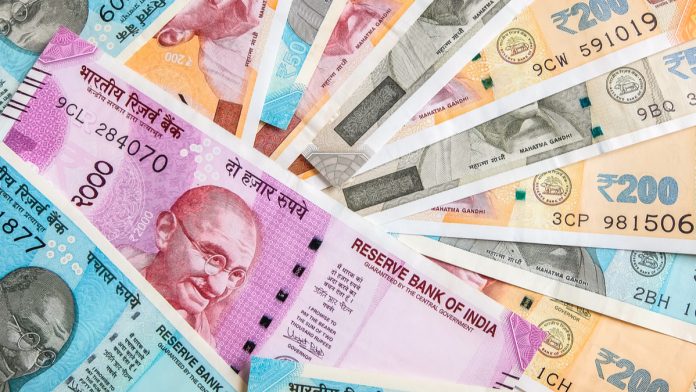- Indian Rupee (INR) rises despite GDP downward revision
- S&P downwardly revised its GDP forecast
- US Dollar (USD) falls, giving back earlier gains
- Federal Reserve policymakers are due to speak
The US Dollar Indian Rupee (USD/INR) exchange rate is falling at the start of the week after two straight weeks of gains. The pair rose +0.12% last week, settling on Friday at 81.71. Today, at 10:30, USD/INR trades -0.15% at 81.58, trading in a range between 81.56 to 81.83.
The Rupee is capitalizing on the weaker USD despite the expectation of slowing growth. According to the latest Reuters poll, the Indian economy is expected to have grown by 6.2% annually rate in July to September after double-digit expansion in the previous quarter. In the April to June quarter India recorded growth of 13.5% annually.
However, with the Reserve Bank of India raising interest rates to rein in inflation, with is above the 6% upper tolerance band, the economy could slow further. Forecasts are for growth between 3.7% to 6.5%.
Elsewhere the S&P also cut India’s GDP forecast for the fiscal year 2022/23 to 7%, down from 7.3%, and then forecast 6.5% growth in 2023/24.
The US Dollar is falling across the board. The US Dollar Index, which measures the greenback versus a basket of major currencies, trades at -0.5% at the time of writing at 105.50 after falling -0.8% across last week.
The US dollar initially rose in early trade on safe-haven flows before paring those gains and falling lower.
The USD rose in risk-off trade as COVID cases rose in China and civil unrest spilled out onto the streets. The population is growing increasingly tired of the unsustainable COVID lockdown restrictions. However, the market mood started to improve, and the USD gave back gains.
Attention is now turning to a busy week ahead with US non-farm payrolls, core PCE, the Fed’s preferred gauge of inflation and a speech by Jerome Powell.
The minutes from the November FOMC showed that policymakers are considering slowing the pace of rate hikes.





